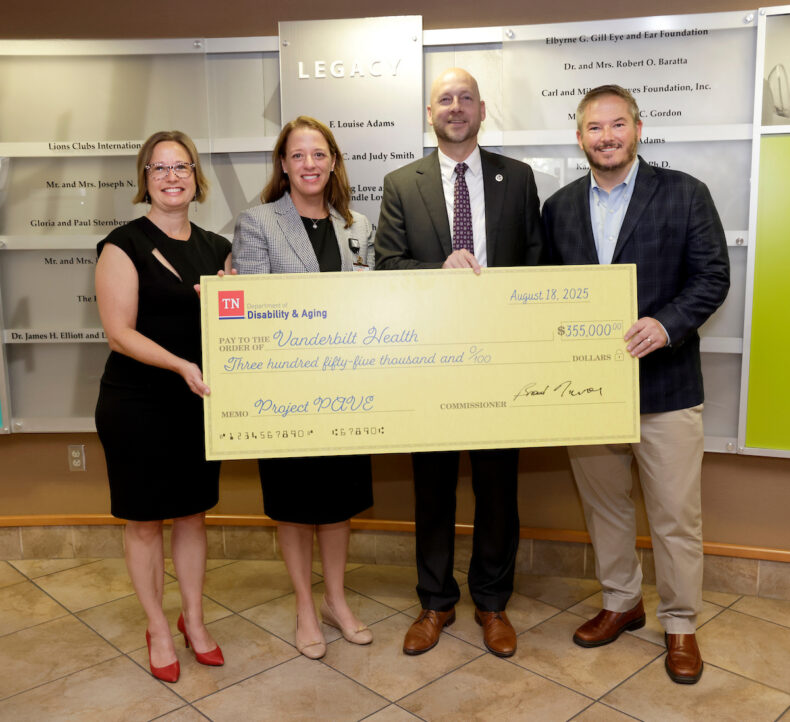Two Vanderbilt Eye Institute (VEI) researchers were recently awarded National Eye Institute (NEI) Audacious Goals Initiative (AGI) for Regenerative Medicine grants for $6.8 million over five years to develop new treatments for optic neuropathies and glaucoma, the leading cause of irreversible blindness.
The NEI program, part of the National Institutes of Health (NIH), seeks to support the development of new disease models to allow researchers to test novel regenerative therapies, including gene-and cell-based therapies, and help transition them into the clinic.

Tonia Rex, PhD, associate professor of Ophthalmology and Visual Sciences, is the principal investigator for the project, “Retinal Ganglion Cell Replacement in Clinically Relevant Models of Optic Neuropathy.”
Rex’s team is developing optic cup organoids, which are lab-grown tissues with the potential to regrow retinal ganglion cells.
“The purpose of my project is to develop two models of optic neuropathy — glaucoma and trauma — in a human relevant species and to optimize delivery, integration and survival of transplanted retinal ganglion cells,” explained Rex.
The team hopes the model will yield a better understanding of how transplant-type therapies may help preserve and restore vision loss due to optic nerve damage.
The second AGI grant funds “Retinal Ganglion Cell Replacement in Optic Neuropathies” and involves David Calkins, PhD, vice chair and director of Research for VEI, who is serving as one of the investigators.

This is Calkins’ third AGI award aimed at moving regenerative medicine forward.
Calkins and his colleagues are generating a new animal to study how to place retinal ganglion cells into the eye and guide the cells’ fibers to appropriate regions of the brain. According to the grant, success would mean overcoming a major hurdle in the development of treatments for vision loss due to glaucoma and other optic neuropathies.
“The goal of our study is to develop an animal model of optic nerve degeneration to test human-derived stem cell implants to regenerate retinal ganglion cells and their axons in the optic projection to the brain,” said Calkins.
The NEI awarded U24 collaborative, multi-principal grants to five multi-disciplinary teams to develop new disease models for a range of eye conditions.

















